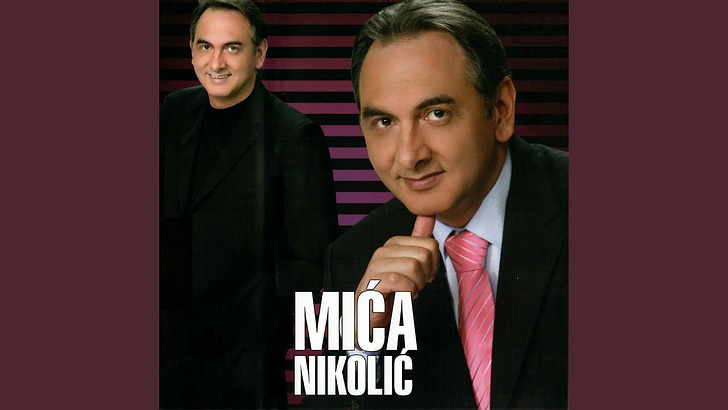I discovered Serbian music in the most unedifying of ways. My brother sent me a TikTok video that consisted of a crude animation of thousands of planes colliding into eachother. The caption was something like ‘Vilnius Airport be like…’ and it was set to a piece of Serbian music. The piece of music was an insane, jarring, complex, dissonant and very fast synthesiser tune. It sounded good to me.
I looked up the album the track was taken off, and it is the only one available on Spotify by the now deceased (d.2018) artist Mića Nikolić. The album, as far as I can tell, was released posthumously. The firs thing to notice here is that Vilnius is not in Serbia. Indeed Vilnius to Belgrade (Serbia’s capital) is a 1,700km, 16 hour drive with no breaks. They are really, really far from eachother, and the Baltic and Balkans have completely different cultural backgrounds.
The inappropriateness of this piece of music to a video about Lithuania’s main airport doesn’t just speak to the opportunism of a TikTok video. It also speaks to the forgotten nature of the Balkans. They are among the poorest countries in Europe. The former Yugoslavia suffered a horrific war in the 1990s. And, a slightly weirder marker of obscurity, most typefaces can’t even be bothered to render their diacritics (e.g. ć, š) properly, so lots of Serbian words in the Latin script look rather janky.
Naturally this cocktail of nicheness makes Serbian culture prime material for this Substack. The curiosity of the region is matched by the curiosity of the Balkan sonic palate (for the sake of time and knowledge, I am limiting this piece to Serbia but this is obviously a recent national creation).
What’s so good about this Serbian music then? Let’s deal with Mića Nikolić as our case study. His posthumous album consists of a few modern-ish pop tracks and very short compositions called things like Mega Kolo and Mladino Kolo and Ludino Kolo. The ‘Kolo’ refers to the fact these are designed for the traditional Serbian round dance, the kolo. These pieces are especially frantic.
Nikolić used a variety of synthesisers in lieu of the more traditional accordion. This produces a thin, 80s sound that is like a continuous, well-structured keytar solo by Chick Corea (with a lot of drugs). There are MIDI strings, some ‘big band’ stabs (also MIDI I suspect).
That’s the timbre. Tonally, the music is weirder still. The music conveys this sense of falling, particularly with Nikolić’s virtuoso scales, and the non-Western tonality of it all. You will detect a certain Middle Eastern flair, ultimately because of the Ottoman influence of the area. To a Western ear jaded by major and minor, it’s ultra colourful and spicy.
Rhythmically, the music is intense too. Nikolić’s kolos are particularly fast and have this bustling drive for all of their two or three minutes. The kolo dance is mostly footwork, involving fast and well-coordinated steps as the circle of participants moves to the right and to the left. Through the magic of YouTube we can step into a Serbian wedding and watch this happen for ourselves:
I suppose people learn the kolo from a young age (?) but at any rate the dance seems impressive to an outsider and a perfect accompaniment to the up-tempo music.
Things get more impressive still. Some Serbian music is written in the exotic, asymmetrical time signatures 5/8 and even the frankly obnoxious 13/8. I’m not sure if kolos are available in these signatures, and I can’t find many examples, but this stuff is difficult to research properly without Serbian. Other Balkan traditions also indulge in these odd time signatures.
Not all of the good Serbian music is designed for kolo. Some pieces, including those on Nikolić’s album, include vocals. The style of delivery is acrobatic and intense, and combined with the spicy tonality described above, it sounds rather daring to a Western ear. One of my now favourite videos of all time is this immensely cursed live performance of Lepotica Grada, which features our man Nikolić on a very cheap set and a band wearing very cheap suits. The sung duo is great, as are the synth solos.
Not all Serbian music is great. Compilations on Spotify seem to concentrate on the very popular stuff which is somewhat more westernised and doesn’t include kolo compositions. There are occasional inflections of the distinctive musical tradition, but there is a lot of boring stuff to trawl through, so be warned.
Nevertheless, discovering a musical tradition like the Serbian one is exhilarating. I remember reading a lot of cultural theory about ‘provincialising the west’ in my BA. What is much more edifying than reading Edward Said et al is actually feeling, rhythmically and emotionally, a sense of difference. To all the dancers in the wedding video, the kolo is a familiar tradition: we are the aliens. When one returns to more familiar music from a foray like this, that music has a touch of strangeness too.
Cultural theorists aren’t that keen on ‘interchange’ or ‘dialogue’ (these terms are favoured by large institutions and governments), they’re much more keen on thinking about power dynamics and the subaltern. As banal as it sounds, the best way to understand one’s own provincial limitations is just to talk to people from other places and take delight in their different things. This is the hedonist’s path to humility.




